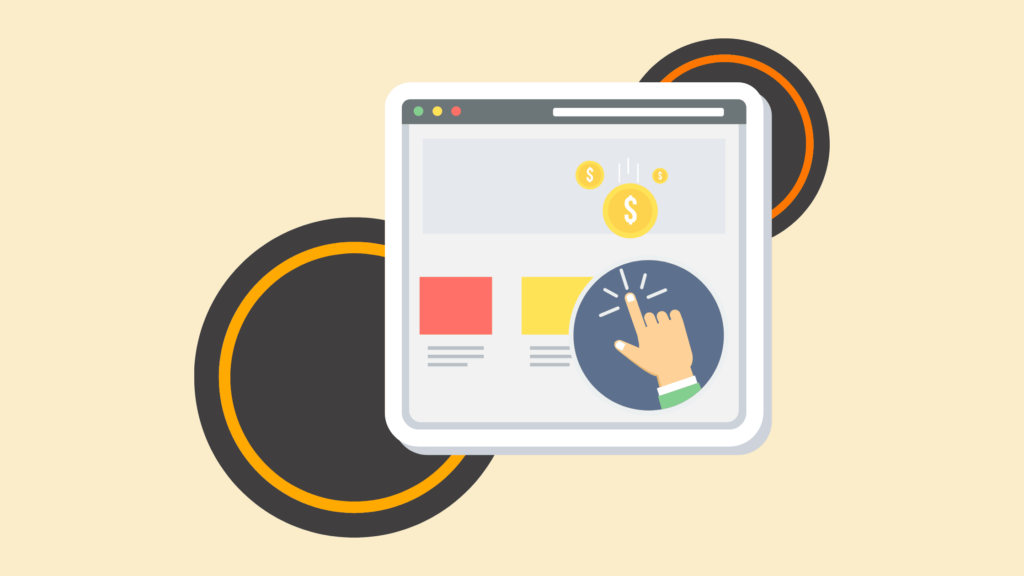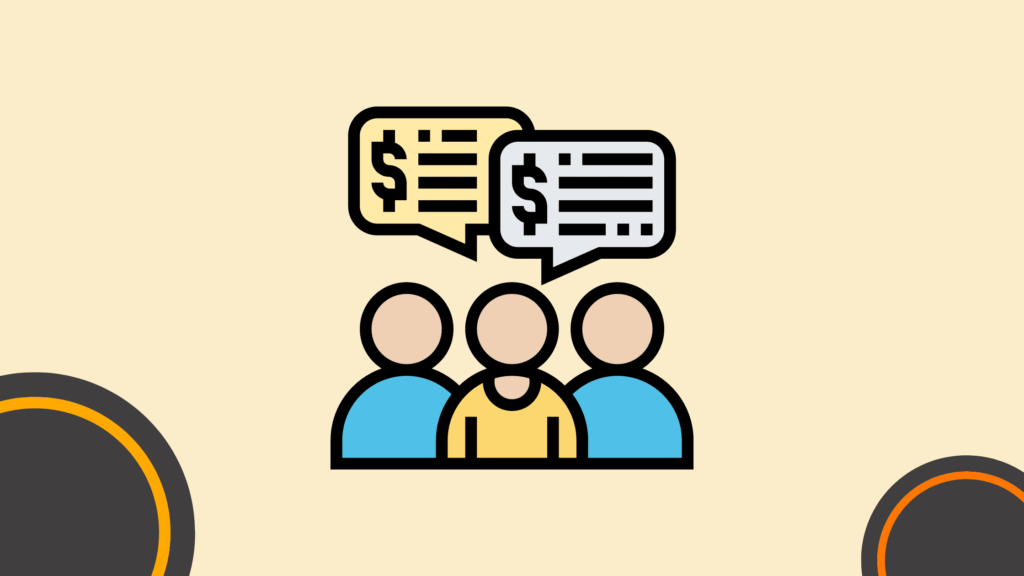How to Find the Best Headline for Your PPC Campaigns
Creating and finding the best headlines for your PPC ads is crucial to successful advertising. They are so important because on average, five times as many people read the headlines as reading the body copy of your ad.
This means that if your headlines don’t grab user’s attention, they will keep scrolling until they find one that does. A headline ends up being the decision maker between a user visiting your site or going to a competitor.
So, we know how important headlines are but how can you create headlines that work for your PPC campaigns and get users to convert?
In this article we will cover how to find the best headlines for your ads.
How to Find the Best PPC Headline

The internet is flooded with content, all of which are vying for your complete attention. How can you persuade your targeted audience to pay attention to your PPC ads?
You need to create headlines that are engaging and attention-grabbing. After all, about 80% of users only read headlines to decide if they are going to click on an ad.
Here are some suggestions for crafting the ideal PPC headlines.
Include Keywords in your headline
The keywords you are targeting for your PPC ads are the foundation of your campaigns. They determine what search queries will result in your ads appearing and are what every element of your campaign is built on.
Before you focus on constructing your entire headline, focus on identifying and implementing keywords into your campaigns. If you don’t have a list of your keywords, you need to do some research. You can use the Google keyword planner or other online keyword tools. These tools are a way of uncovering data about potential keywords before you add them to your ads.
Once you have a list of your target keywords you can begin to find the best headlines for your PPC campaigns. Keywords need to be in your headlines and match the search intent of the user.
For example, if you are selling men’s blue jeans, your headline should include some combination of those words. With targeted keywords you can write more straight-forward, effective, and relevant headlines.
Incorporate your Value Proposition

If you want users to click on your ads, you need to think about what sets you apart from the competition. Your value proposition or unique selling proposition can show users how they can benefit from your business.
This is what differentiates your business from everyone else in the industry and makes your product or service better than the rest. What can you offer the users that they can’t get anywhere else?
Whatever the value proposition is, include some benefit or display value to the audience. You need to briefly explain how users can benefit from your business, what makes you exciting or memorable, and focus on the benefits rather than features.
Every effective headline incorporates some unique advantage. Take these examples for instance:
- “Electricians Boston, Massachusetts”
- “Electricians Boston – Same Day & Next Day Service”
When you look at both of these headlines, option A doesn’t tell you much. Option B is much more benefit and value driven.
It gives a user a reason to click on the ad by outlining the great and fast service of the company. They show that their service is faster and more convenient than the competition.
But even this headline can be improved. If you consider what sets your business apart from the competition instead of just saying what you do you will have more success with your ads.
Focus on Emotions
Emotions can be a huge deciding factor in getting a user to engage with an ad. You need to make your audience care by telling them how much you can help them, how impressive, or even how fast and stress-relieving your service is.
You need to assure the user that you can solve their problems, they won’t click on your ad if they are convincing. One of the best ways to do this is by asking a question or including powerful emotional wording in a headline.
If it is strong enough, you won’t need to include anything else in your headline. When you create an emotional headline, they will do all the talking for you. This works great for the insurance industry, like this example:
“Been injured in a crash? Not your Fault? Get help today!”
Headlines like this typically perform much better than ones that use traditional language. They make people think about their situation and connect with the headline because it applies to them.
Alternatively, you should incorporate powerful adjectives like “freshly handmade,” “expertly crafted,” or “Lightning-fast results.” These headlines will show benefits and connect with the user emotionally because they will feel like they need the benefit you are outlining.
Sometimes a headline as simple as “Expertly Crafted. Lightning-Fast results. Sign up Today.” will make your headline attractive.
However, you construct your headline you need to create some emotional connection and get the users to connect with what you are offering.
Keep it Short and Simple
As a marketer there is always a lot we want to say or communicate to the target audience, but we can’t always say it all and making headlines too long or complicated is not effective.
Your headlines should be written in short and straightforward language. But plain language doesn’t have to be monotonous! There are several straightforward power words that produce persuasive yet understandable headlines. You have only a few seconds to capture the interest of the audience. This means you need to keep the headlines simple, clear, and focused. This way they become smoother, more accessible, and clickable, all of which facilitate easier reading.
Offer a Solution
Like we mentioned previously, your headline needs to focus on benefits and the problem your product or services solves. The solution you have should be obvious in your headline and be crystal clear to the reader.
Perry Marshall, the author of the best-selling book on Google AdWords, frequently stresses the need to provide solutions to your prospects’ problems in your ad copy. This strategy is just as important for your ad headline as it is for the ad’s body copy.
You might phrase your headlines similarly to how Apple marketed its iPod: “1,000 songs in your pocket,” giving music enthusiasts a perfect alternative to carrying around CDs. Focusing on the solution you offer, the benefits a user gets from becoming a customer, and showing value to the user will lead to more clicks and conversions through your PPC ads.
Create Effective CTAs
One of an ad headline’s most significant components is the Call to Action (CTA). Any PPC campaign’s main objective is to persuade viewers to perform the intended action. Make sure your headlines are clear about what you want a user to do and what they get when they do it. CTAs explain to consumers what they must do in order to receive the benefits you are offering. If you don’t include a CTA or have ones that are confusing, you will see fewer users clicking on your ads.
CTAs might be as straightforward as “Buy now,” “Sign up today,” or “Subscribe here,” but they must specify what the user must do to take advantage of your product.
Additionally, consider that no single CTA is suitable for all market segments or business models. The best CTA boosts conversion by appealing to both reason and emotion. Anytime you want to encourage immediate action, like subscribing to a program or purchasing a product, you need to include it in your headline.
Test your Headlines Before Going Live
A challenging aspect of ad creation is crafting and optimizing ad headlines for a PPC campaign. Headline testing is used by the most successful businesses to find the headlines that convert the most users. Traditional A/B testing can, however, require a considerable time and financial investment. But headlines testing with a remote testing tool can be a fantastic way for smaller businesses to create headlines that work.
There are a number of great tools for generating, testing, and analyzing feedback to create better headlines. They help businesses that have a hard time producing ad headlines that contain keywords and provide value to users. These tools aid in headline optimization, increase CTR and cost reduction by getting feedback from real users. With the right tools, process, and effort any business can find the best headlines for their PPC campaigns.
Conclusion
Writing effective PPC campaign headlines can be a complicated process, but if you follow these tips and incorporate a headline testing process you can create headlines that lead to conversions. There are a number of steps you need to take to create great headlines, but if you spend time optimizing them you will be set up for success.
If you want to find the best headlines for your PPC campaigns, follow these tips. They will help you whether you are developing online ad headlines for the first time or even have experience with such campaigns. You can ensure more sales and conversions from advertising on any platform if you focus on your headlines and take steps to optimize them.
FAQ
What makes a compelling headline for a PPC campaign?
A compelling headline for a PPC campaign grabs attention, communicates a clear value proposition, includes relevant keywords, and entices users to click through to the landing page.
How can I incorporate keywords into my PPC headlines effectively?
Incorporate keywords naturally into your PPC headlines to improve relevance and ad quality. Focus on placing keywords at the beginning of the headline and use ad extensions for additional keyword variations.
Why is it important to match PPC headlines with ad copy and landing page content?
Matching PPC headlines with ad copy and landing page content creates a cohesive user experience, reduces bounce rates, and improves ad quality scores, leading to higher click-through rates and conversions.
What role does emotional appeal play in PPC headlines?
Emotional appeal in PPC headlines can evoke curiosity, excitement, urgency, or desire, driving user engagement and click-through rates. Use words and phrases that resonate with your target audience’s emotions and aspirations.
How can I use numbers or statistics in my PPC headlines to increase effectiveness?
Using numbers or statistics in PPC headlines adds credibility and specificity, making ads more compelling and informative. Highlight key benefits or features with quantifiable data to attract users’ attention.
What are some best practices for writing mobile-friendly PPC headlines?
Write concise and impactful PPC headlines that are easily readable on mobile devices. Keep headlines under 30 characters, use action verbs, and prioritize the most important information to capture users’ attention quickly.
How can I create urgency or scarcity in my PPC headlines?
Create urgency or scarcity in PPC headlines by using time-sensitive language, limited-time offers, or countdowns to encourage immediate action. Phrases like “Limited Time Offer” or “Ending Soon” can prompt users to act fast.
What strategies can I use to test and optimize PPC headlines?
Test different variations of PPC headlines by conducting A/B tests or split tests to identify which ones perform best. Experiment with different language, calls to action, and offers to determine the most effective messaging for your audience.
How can I tailor PPC headlines for different stages of the buyer’s journey?
Tailor PPC headlines to align with the user’s intent and stage of the buyer’s journey. Use awareness-focused headlines to generate interest, consideration-focused headlines to provide information, and decision-focused headlines to drive conversions.
How can I ensure my PPC headlines stand out from competitors?
Ensure your PPC headlines stand out from competitors by highlighting unique selling points, offering compelling incentives or benefits, and using distinctive language or formatting. Emphasize what sets your offer apart to capture users’ attention and drive clicks.
What role does ad relevance play in crafting PPC headlines?
Ad relevance is crucial in crafting PPC headlines as it determines how well your ad matches a user’s search query. Aligning headlines with keywords and offering relevant messaging improves ad relevance, leading to higher ad placements and click-through rates.
How can dynamic keyword insertion (DKI) enhance PPC headlines?
Dynamic keyword insertion (DKI) automatically inserts a user’s search query into your PPC headline, making ads more relevant and personalized. DKI helps improve ad performance by dynamically customizing headlines to match users’ search intent.
Should PPC headlines include a call to action (CTA), and if so, what are some effective examples?
Yes, including a call to action (CTA) in PPC headlines encourages users to take specific actions, such as “Shop Now,” “Learn More,” or “Get Started.” Effective CTAs prompt immediate responses and drive conversions.
How can I create PPC headlines that address user pain points or needs?
Create PPC headlines that address user pain points or needs by identifying common challenges or desires within your target audience. Tailor headlines to offer solutions or benefits that directly address these pain points, capturing users’ interest and driving clicks.
Can I use ad extensions to supplement PPC headlines, and if yes, how?
Yes, ad extensions can supplement PPC headlines by providing additional information or features, such as site links, callouts, or location information. Use ad extensions strategically to enhance ad visibility and provide more context to users.
What strategies can I use to make my PPC headlines more persuasive?
Make PPC headlines more persuasive by using power words, emphasizing benefits, creating a sense of urgency, or offering incentives. Highlight unique selling points and address user objections to compel users to click on your ad.
How can I optimize PPC headlines for local targeting?
Optimize PPC headlines for local targeting by including location-specific keywords, mentions of nearby landmarks or attractions, and localized offers or promotions. Tailoring headlines to local audiences improves relevance and increases engagement.
Should I test punctuation or symbols in my PPC headlines, and if yes, what are some effective examples?
Yes, testing punctuation or symbols in PPC headlines can capture users’ attention and improve ad performance. Experiment with using exclamation points, question marks, or emojis strategically to add emphasis or convey emotion.
How can I leverage competitor analysis to improve my PPC headlines?
Leverage competitor analysis to identify gaps or opportunities in your industry and tailor PPC headlines to differentiate your brand. Analyze competitors’ ad messaging, offers, and positioning to craft unique and compelling headlines that stand out to users.
What role does ad copywriting play in complementing PPC headlines?
Ad copywriting plays a crucial role in complementing PPC headlines by providing additional context, benefits, and information to users. Coordinate headlines and ad copy to create a cohesive message that resonates with your audience and drives action.
Bio
 Owen Fay is a digital marketer at Poll the People, an emerging user research and usability testing platform. At Poll the People he focuses on content creation and moving Poll the People forward through all digital marketing mediums. Owen has 5+ years of experience across multiple marketing fields and industries including wealth management, the medical device industry, and eCommerce. Connect with Owen on LinkedIn.
Owen Fay is a digital marketer at Poll the People, an emerging user research and usability testing platform. At Poll the People he focuses on content creation and moving Poll the People forward through all digital marketing mediums. Owen has 5+ years of experience across multiple marketing fields and industries including wealth management, the medical device industry, and eCommerce. Connect with Owen on LinkedIn.
Top AI Marketing Generators
Master the Art of Video Marketing
AI-Powered Tools to Ideate, Optimize, and Amplify!
- Spark Creativity: Unleash the most effective video ideas, scripts, and engaging hooks with our AI Generators.
- Optimize Instantly: Elevate your YouTube presence by optimizing video Titles, Descriptions, and Tags in seconds.
- Amplify Your Reach: Effortlessly craft social media, email, and ad copy to maximize your video’s impact.